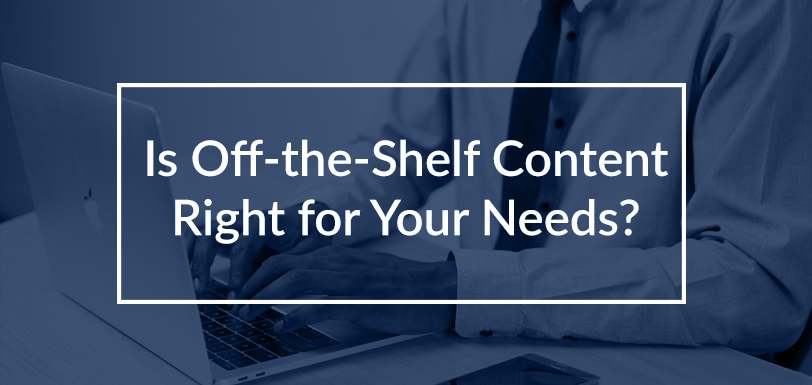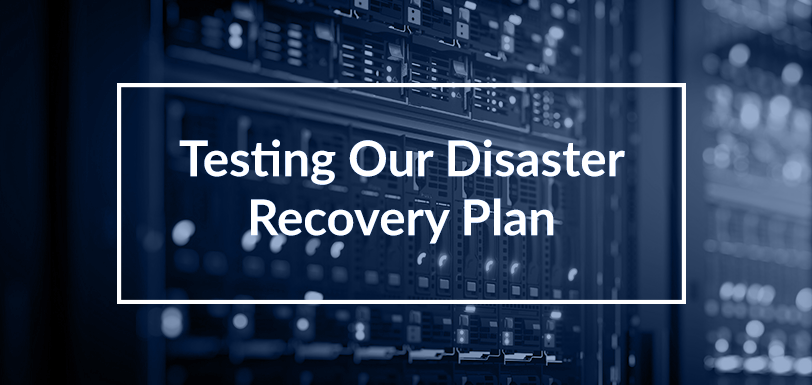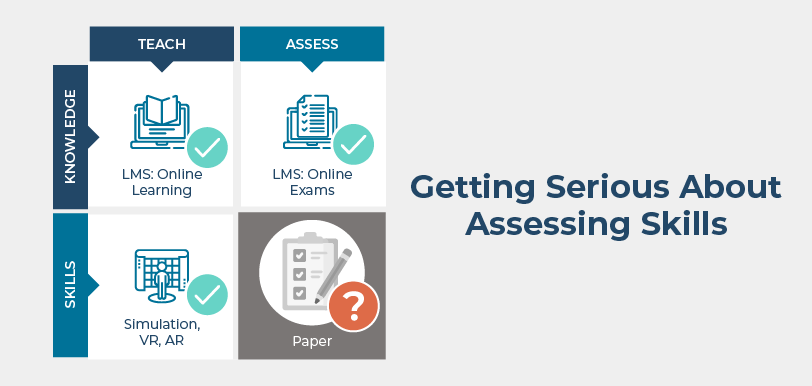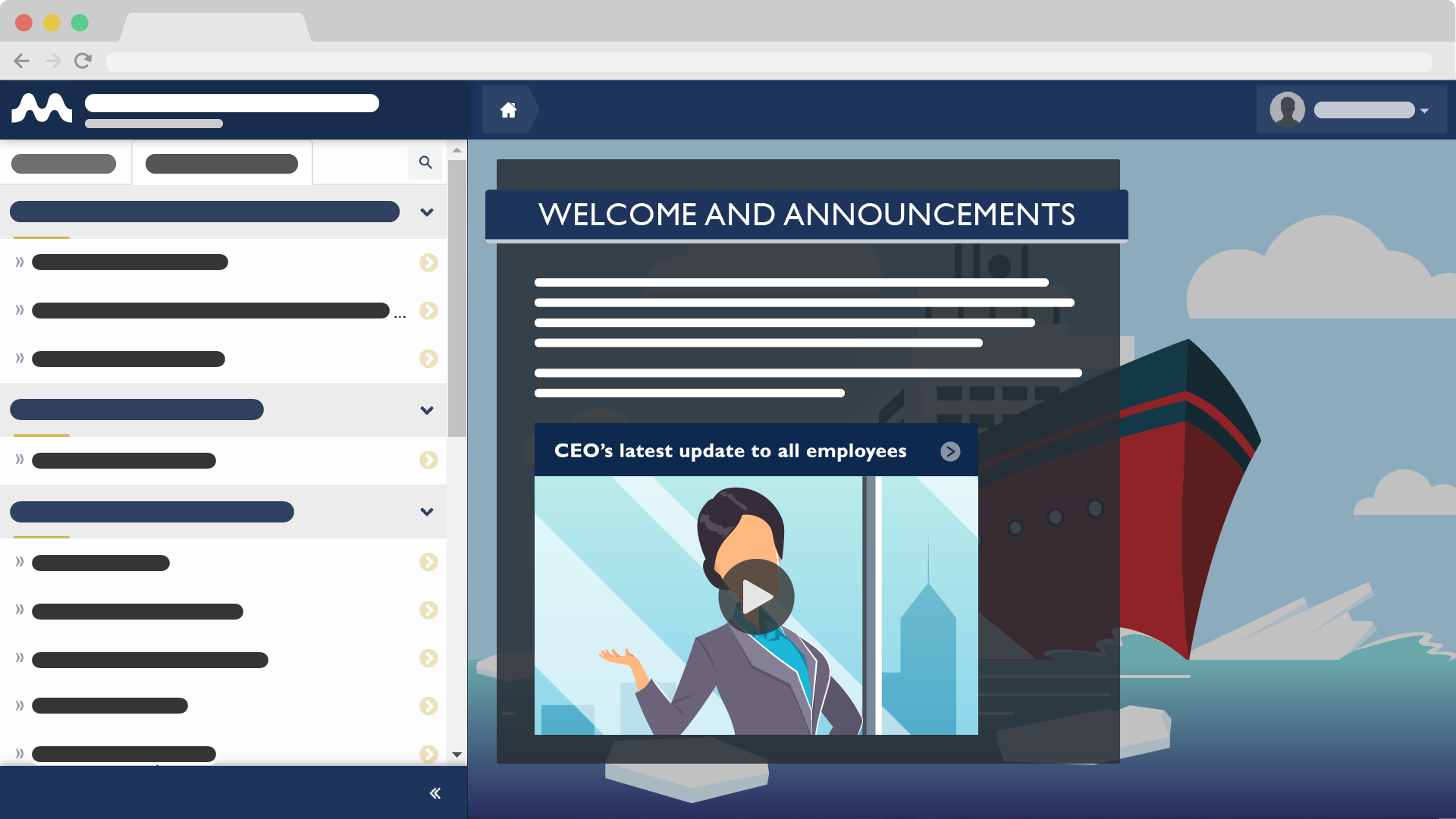Using CBT in a Learning Management System
Nov 10, 2016 Murray Goldberg 1 CBT, eLearning, LMS, Training ContentPhoto above taken by US Air Force Staff Sergeant Matt Davis / CC BY-SA 2.0
This short series of articles is about the use of Computer Based Training (CBT) and other eLearning content, and how that use is related to learning management systems. The implications go beyond the use of technology and provide a glimpse into the future of eLearning in the maritime industry.
In this first article, I am going to recount a bit of history taken from other industries that adopted eLearning earlier than the maritime sector. If you wish to skip this history, then feel free to skip this article and wait for the next post. HOWEVER (emphasized to catch you before you stop reading), the purpose of this article is not simply a history lesson. It is information describing business aspects of the eLearning industry that have come to be the norm in other industries. So more than a history lesson, this article provides some potential insight into the future of maritime eLearning that every person in this industry should understand.
The second article in this series will return to the “learning” aspects of the use of CBTs and LMSs in the maritime industry – answering the questions of “why would you want to use them together”, and “how would you do so”? If you would like to be notified when that article comes out, and have not already signed up for notifications, please feel free to do so here. But for now – some insight into the future of maritime eLearning.
Evolution of the eLearning Movement
Let’s start by discussing how eLearning content and delivery has evolved in other industries.
As you may know, my background is higher education. In the 1990s I was a faculty member at a large university doing research on the effectiveness of web-based learning. My research led me to create one of the first learning management systems around 1995. That system, WebCT, came to be widely used in 80 countries.
WebCT was born at a time when the world did not really have a precedent for eLearning – it was a new tool. However, the world did have a precedent for content creation by way of the world’s large textbook publishers. They were the Pearsons, McGraw Hills, Wileys and so on of the world.
Content and LMS As a Package
As eLearning became widely adopted in higher education, the established content providers (the textbook publishers) started to build learning management systems. This made sense – they needed some form of delivery mechanism (typically a simple LMS) to deliver their content to university students. Very quickly, each publisher of content had their own proprietary, simple LMS. They were not sophisticated, but they did the job they were designed to do. This worked very well most customers, but there were limitations:
- Choosing content locked the customer into a particular LMS. Likewise, choosing an LMS locked that customer into some specific content. This was a problem as a customer may like a content offering but not like the accompanying LMS – or vice versa.
- As universities bought more and more digital learning content, they often wanted to add content from more than one publisher to their “learning library”. Unfortunately, publishers at that time did not allow their content to be “played” in other learning management systems. The only way for a university to use content from multiple providers was to support multiple LMSs on campus. That would be a major problem both for students and for IT departments.
- Some customers, even though they loved the content from their selected publisher, wished to supplement that content with their own materials. This was either impossible or at least problematic when using the LMS created by one content publisher.
Content and LMS as Independent Choices
Some of the points mentioned above applies in the maritime industry today – but things are starting to change. For an idea of how they may change, let’s look at what happened in higher education. What happened? Two main things:
- SCORM was created. SCORM is a set of technical standards which allowed (and still allows) content to easily be moved from one LMS to another. In fact, I acted as an advisor to the early efforts in this area – occasionally offering opinions and other input to a late friend and pioneer in sharable content, Mark Resmer, while he was at the IMS. SCORM was the necessary step in removing the technical impediments to creating content that can be played in any (or at least almost any) LMS.
- Content providers started allowing their content to be played in other LMSs, not necessarily on LMSs of their competitors, but in some variety of LMSs. As content creators own their content, it is their prerogative to decide in which LMS it can be delivered. Allowing content to be played in other LMSs is now ubiquitous in other industries, and I suspect will become so before long in the maritime industry.
Now in higher education, and in most other industries where eLearning is common, the landscape has changed significantly from those early days. While content publishers still do provide some form of (usually) free LMS to their content customers, the tight binding between content and LMS has gone away.
Customers can choose the content of the provider that works best for them and separately choose the technology (LMS) that works best for them. The option of using the LMS accompanying the content remains. However, those who wish to choose a different system or use content from a mix of providers (including self-created content) are free to do so.
In other words, they are free to choose the LMS that works best for them, and separately the content that works best for them.
Implications for the Maritime eLearning Industry
What this meant for my previous company was that we focused only on the LMS – never on content. There were other experts who could create content much better than we could. And we felt that we had expertise in the creation of technology that not everyone else had.
As such, WebCT was always “content-agnostic” – meaning we were happy to play content from any eLearning content publisher. This also gave rise to thriving competition in the LMS sector – companies creating content-agnostic LMS platforms and competing on the basis of LMS features alone. This is healthy.
Keep in mind that most of the higher education content providers still have their own proprietary LMS platforms. So this has not been a radical shift for the content producers, but has simply provided choice to the “market”.
What this meant for content providers in higher education is that they found new markets which were previously closed off to them. For example, if one university was primarily using Pearson content, it used to be essentially impossible for a competitor like McGraw Hill to sell to them as it meant the college would have to adopt a second LMS. With the rise of content-agnostic LMSs, the content provider with the best “title” on any particular topic could always find a ready buyer regardless of previous purchase decisions.
What has this meant for eLearning in higher education as a whole? In the end it has benefited all. It has provided choice of LMS platform and broadened choice of content. It has grown the market in terms of both size of the companies serving it, and in the range of solutions they offer. It has given an amazing boost to innovation in the industry – as competition always does.
One thing that can be said for certain is that content providers and LMS providers are doing very well in higher education. There, established publishers of content are huge multi-billion dollar companies. And while the LMS providers are rarely multi-billion dollar companies, the top couple are, and there are a tremendous number of smaller ones. This creates a great deal of variety and choice in the market. I believe this to be a very healthy case of market competition. Content providers and LMS providers are competing within their respective niche, always innovating, and always providing better and more products. This creates stronger companies, and a far better array of selections (both for content and LMSs) for the users of these products.
Conclusion
Enough about business. The next article in this series is going to return the focus to learning. In it, we will discuss in which cases it makes sense to use CBTs or other maritime training content from one provider and an LMS from another. It will then go on to discuss how to do so to improve training outcomes.
If you would like to be notified when that article comes out, and have not already signed up for notifications, please feel free to do so here. Until then, keep safe and best wishes to all of you.
Follow this Blog!
Receive email notifications whenever a new maritime training article is posted. Enter your email address below:
Interested in Marine Learning Systems?
Contact us here to learn how you can upgrade your training delivery and management process to achieve superior safety and crew performance.







I am an instructor in navigation and I would like to learn more about the use of technology in teaching and learning.